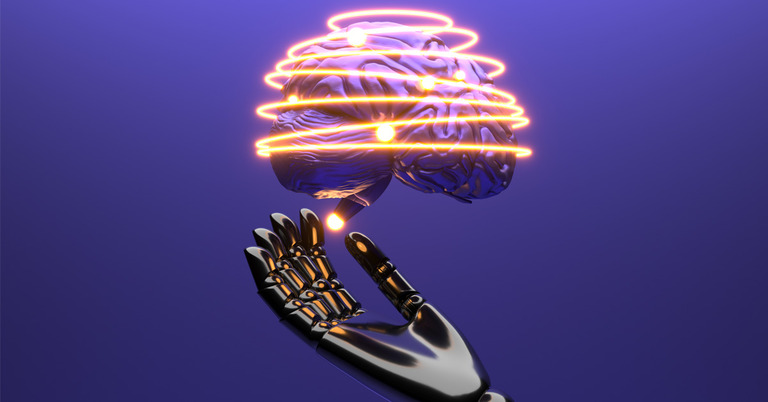The integration of artificial intelligence in our daily lives has transcended basic functional applications, touching the profound realms of creativity and art. Generative AI, particularly, stands at the forefront of this revolution, providing tools that augment human creativity, and transforming how artists, writers, and designers conceive and execute their visions. This blog explores how generative AI is not just a tool for automation, but a collaborator that enhances human ingenuity. Here are some of the latest statistics on how Generative AI can augment human creativity:
- A study published in Harvard Business Review suggests that Generative AI can help overcome the challenges of democratizing innovation by supplementing the creativity of employees and customers. It can promote divergent thinking, challenge expertise bias, assist in idea evaluation, support idea refinement, and facilitate collaboration among users1.
- Research from PNAS Nexus utilizing a dataset of over 4 million artworks from more than 50,000 unique users shows that text-to-image AI enhances human creative productivity by 25%. It also increases the value as measured by the likelihood of receiving a favorite per view by 50%. While peak artwork Content Novelty increases over time, average Content Novelty declines, suggesting an expanding but inefficient idea space.
- Another study highlighted in SSRN aligns with these findings, indicating that text-to-image AI substantially enhances human creative productivity by 25% and increases the value as measured by the likelihood of receiving a favorite per view by 50% over time.
- An article on arxiv.org reports that for low-DAT writers, the use of Generative AI ideas can increase assessments of how well a story is written by up to 26.6%, enjoyment of the story by up to 22.6%, and decrease how boring the story is by up to 15.2%.
The Basics of Generative AI
Generative AI refers to a subset of artificial intelligence technologies that can generate new content, from text to images, music, and more, based on the patterns and data it has learned. Unlike traditional AI, which is typically tasked with analyzing data and making predictions or decisions based on that data, generative AI is about creating something entirely new, pushing the boundaries of what machines can achieve.
Understanding How Generative AI Works
At the core of generative AI are machine learning models, particularly those known as generative models. These models are trained on large datasets—collections of text, images, music, or any form of data relevant to the task at hand. Through training, these models learn the underlying patterns, structures, and styles inherent in these datasets. Once trained, they can produce new works that mimic the original data’s style but are unique creations of their own.
One prominent example is the Generative Pre-trained Transformer (GPT) models, which are used for generating human-like text. These models are trained on internet text and can write poetry, code, essays, and even simulate dialogue. Similarly, in the visual arts, models like DALL-E and StyleGAN have demonstrated the ability to generate novel images that are both impressive and expressive.
Types of Generative AI Technologies
Generative AI is not limited to text and images. In music, tools like OpenAI’s Jukebox can compose new music in various styles, suggesting not only melodies but also harmonies and rhythms that are coherent and innovative. For video, AI algorithms can generate realistic scenes and animations that could revolutionize filmmaking, video games, and virtual reality.
Each of these technologies uses a different approach to learning and creation, tailored to the specific nuances of their medium. However, what they share is the ability to augment human creativity, offering tools that can inspire and expand the creative capabilities of humans.
Historical Context and Evolution of Generative AI
The journey of AI in creative domains has been a progressive narrative of increasing complexity and capability. Initially, AI applications in creativity were rudimentary, focusing on replicating simple patterns or automating basic tasks. However, as technology advanced, so did the sophistication of these systems.
The Early Days of Creative AI
The early experiments with AI in creativity involved simple pattern recognition and replication. Programs could generate basic artworks or compose simple melodies based on strict rules and parameters. These early systems were limited by the technology of their time, lacking the depth and flexibility required for true creative expression.
The Leap to Generative Models
The real turning point came with the development of advanced neural networks and deep learning. These technologies allowed for the creation of more sophisticated AI models that could learn from vast amounts of data and generate outputs that were not only unique but also creatively compelling. This shift marked the beginning of what we now consider generative AI.
The evolution from simple, rule-based algorithms to complex generative models has transformed AI from a tool of mere replication to a partner in creativity. This progression is mirrored in the increasingly complex applications of AI across different creative sectors, paving the way for an era where AI’s role is not to replace the artist but to work alongside them, enhancing and expanding their creative expression.
Generative AI in Various Creative Sectors
Generative AI is making significant impacts across various creative industries, enabling new forms of artistic expression and innovation. This section explores how this technology is being utilized in the fields of visual arts, music and performing arts, writing and content creation, and design and architecture.
Visual Arts
In the realm of visual arts, generative AI is being used to create stunning and thought-provoking pieces. AI tools such as DALL-E and Artbreeder allow artists to generate images and artworks by inputting specific parameters or guiding the AI with initial sketches. These technologies can mix styles, synthesize textures, and manipulate forms in ways that were previously unimaginable, enabling artists to explore new creative frontiers.
For instance, generative AI has facilitated the emergence of new artistic genres like “AI impressionism,” where machines create artworks that are reminiscent of past styles but with a distinctly modern twist. These pieces often reflect a blend of computational precision and traditional aesthetic sensibilities, pushing the boundaries of how art is defined and consumed.
Music and Performing Arts
In music, AI is not only composing pieces that resonate with human emotions but is also helping in the performance aspect. Projects like Google’s Magenta are exploring the use of AI to create new compositions as well as tools that can accompany musicians in real-time during performances. This technology can analyze music in various styles and then generate complementary pieces, expanding the creative toolkit available to musicians.
AI-generated music is also being used in film scores, video games, and even live performances, providing a scalable way to produce music that can adapt dynamically to different scenarios. The use of AI in these contexts challenges traditional notions of authorship and creativity in music, proposing a collaborative integration of technology and human talent.
Writing and Content Creation
Generative AI has made significant inroads in the field of writing and journalism. Tools like GPT (Generative Pre-trained Transformer) have the ability to generate written content, from poetry and stories to news articles and reports. This capability is not only enhancing the productivity of writers by helping with drafting and editing but also enabling a new form of interactive storytelling where narratives can adapt to readers’ preferences or actions.
In journalism, AI tools are being used to automate the writing of routine news pieces, like sports results and financial updates, allowing human journalists to focus on more complex analysis and investigative reporting. This shift is creating a new landscape where human creativity is augmented by AI’s capacity to handle repetitive or data-intensive tasks efficiently.
Design and Architecture
Generative AI is revolutionizing the field of design and architecture by offering tools that can simulate and predict structural and aesthetic outcomes. AI-driven design software can generate multiple iterations of a design based on specified parameters, helping designers and architects explore a wider range of options before finalizing their plans.
In architecture, AI models are being used to optimize building layouts based on environmental conditions, usage patterns, and aesthetic preferences, making the design process more efficient and sustainable. These tools also help in creating adaptive living and working spaces that can change according to the needs of their inhabitants, showcasing the potential of AI to create dynamic and responsive environments.
Benefits of Generative AI to Creativity
The integration of generative AI into creative processes offers several benefits, enhancing human capabilities and transforming traditional practices. Here, we explore the key advantages of this technology in fostering innovation and creativity.
Enhancement of Human Creativity
Generative AI acts as a catalyst for human creativity, providing artists, musicians, designers, and writers with tools that inspire and extend their creative capabilities. By handling routine aspects of creative work, AI allows creatives to focus on the more innovative and strategic parts of their projects. This collaboration between humans and machines can lead to the discovery of new styles, techniques, and ideas that might not have been possible otherwise.
Increased Efficiency and New Possibilities
With AI’s ability to process and analyze large datasets quickly, it can significantly speed up the creative process. This efficiency is particularly beneficial in industries like film and video games, where production timelines are critical. Additionally, AI can generate numerous iterations at an unprecedented scale, providing creatives with a plethora of options to choose from and further refine.
Accessibility of Creative Tools
Generative AI democratizes the creation process by making sophisticated tools available to a broader audience. With basic programming knowledge, individuals can leverage these powerful AI tools to create works that would require extensive technical skills or resources. This accessibility is empowering a new generation of creators who can experiment and innovate without the traditional barriers of entry in their respective fields.
Challenges and Ethical Considerations
While generative AI presents numerous opportunities for enhancing creativity, it also raises several challenges and ethical considerations that need to be addressed. The next section will explore these aspects, focusing on the implications of AI in creative industries and the responsibilities that come with its usage.






